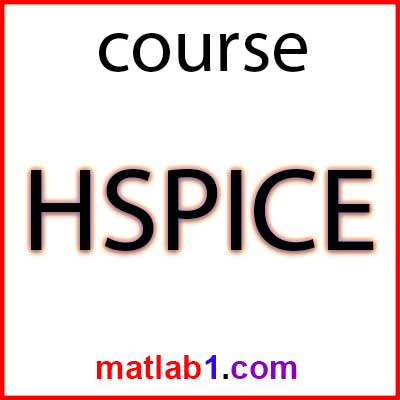Description
With the complexity and breadth of electronic circuits today, the use of computers in analysis has become necessary.
HSPICE software is the most common software for simulating electrical and electronic circuits. This program has the ability to transiently analyze DC, AC, noise, and Fourier in electrical and electronic circuits.
In this program, circuits can include resistors, capacitors, inductors (without cross-coupling and cross-coupling), non-ideal intermediate connections, current or voltage controlled switches, independent and dependent voltage and current sources, and semiconductor elements such as diodes, and transistors.
Other features of this software include the following:
- Investigating the effect of changes in circuit components and calculating the sensitivity of circuit behavior to it (including resistors, inductors, capacitors, diodes, and transistors, etc.)
- Consider the nonlinear effects of elements in circuit behavior
- Circuit optimization according to the above conditions
- Investigation of the behavior of electronic circuits in terms of types of noise and their analysis in the frequency domain and obtaining the frequency spectrum based on Fourier analysis
The following four basic steps should be considered when using the HSPICE program to analyze circuits:
- Convert the circuit to an understandable program for HSPICE (NetList file)
- Determine the type of analysis required
- Determine the desired inputs and outputs
- Run the program and see the waveforms of different parts of the circuit

Course topics
- Introduction to electronic circuits and comparison of different types of circuit simulation software
- Software installation training
- Familiarity with the general principles of analog and digital integrated circuit design
- Introducing the general structure of the software
- Express how the circuit is analyzed by the software in terms of transient states, dc working point, ac analysis, noise, and Fourier
- Learn how to simulate passive types by software
- Learn how to simulate intermediate connections by HSPICE software
- Familiarity with how to study the effect of changes in circuit components and calculate the sensitivity of circuit behavior to it (including resistors, inductors, capacitors, diodes, and transistors, etc.)
Technology files available for download
BJT transistor file technology
BICMOS transistor file technology
CMOS file technology 50 nm
CMOS file technology 1 um
CMOS 1.2 um file technology
65 nm CMOS file technology
90 nm CMOS file technology
CMOS 0.18 um file technology
CMOS 0.25 um file technology



Reviews
There are no reviews yet.